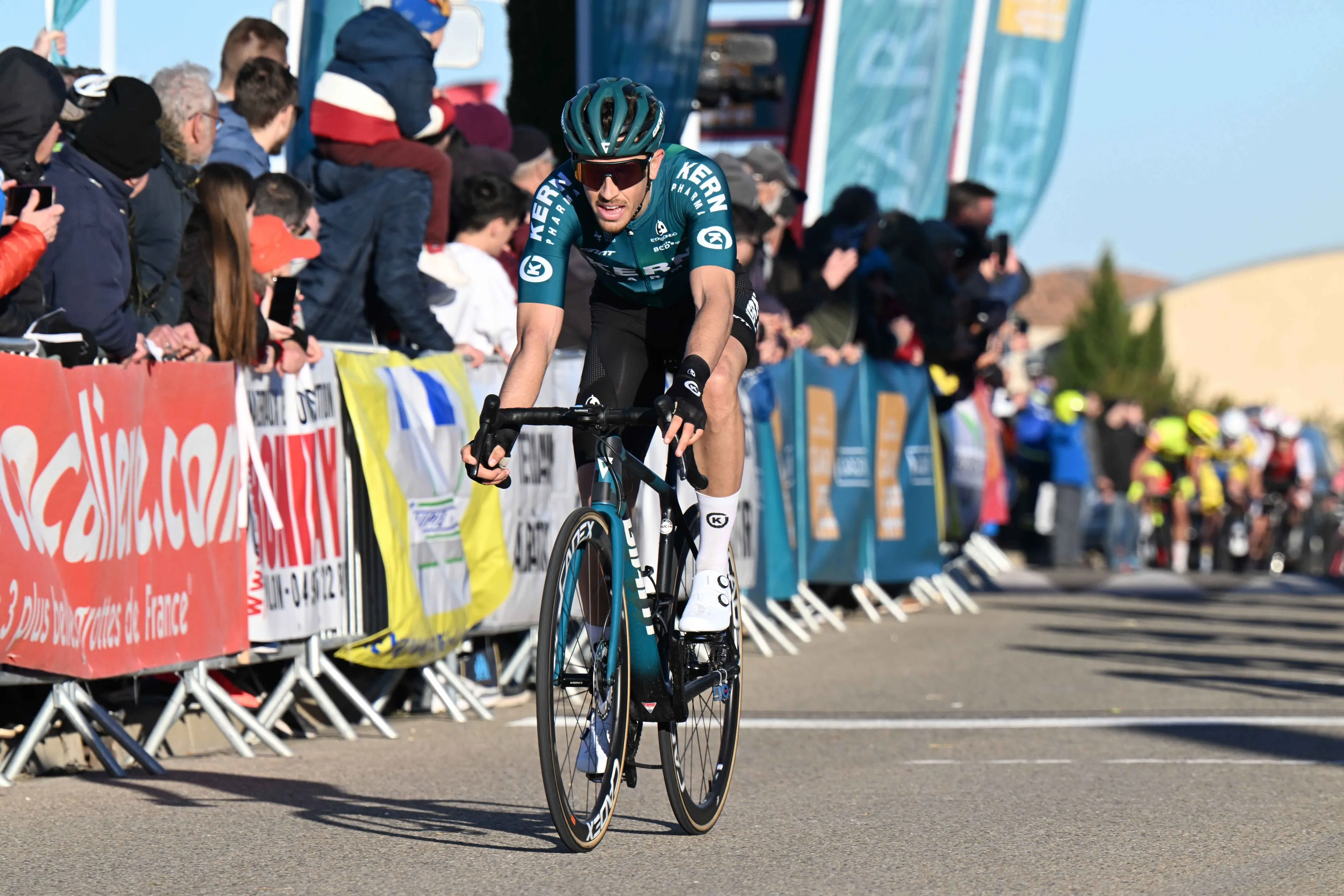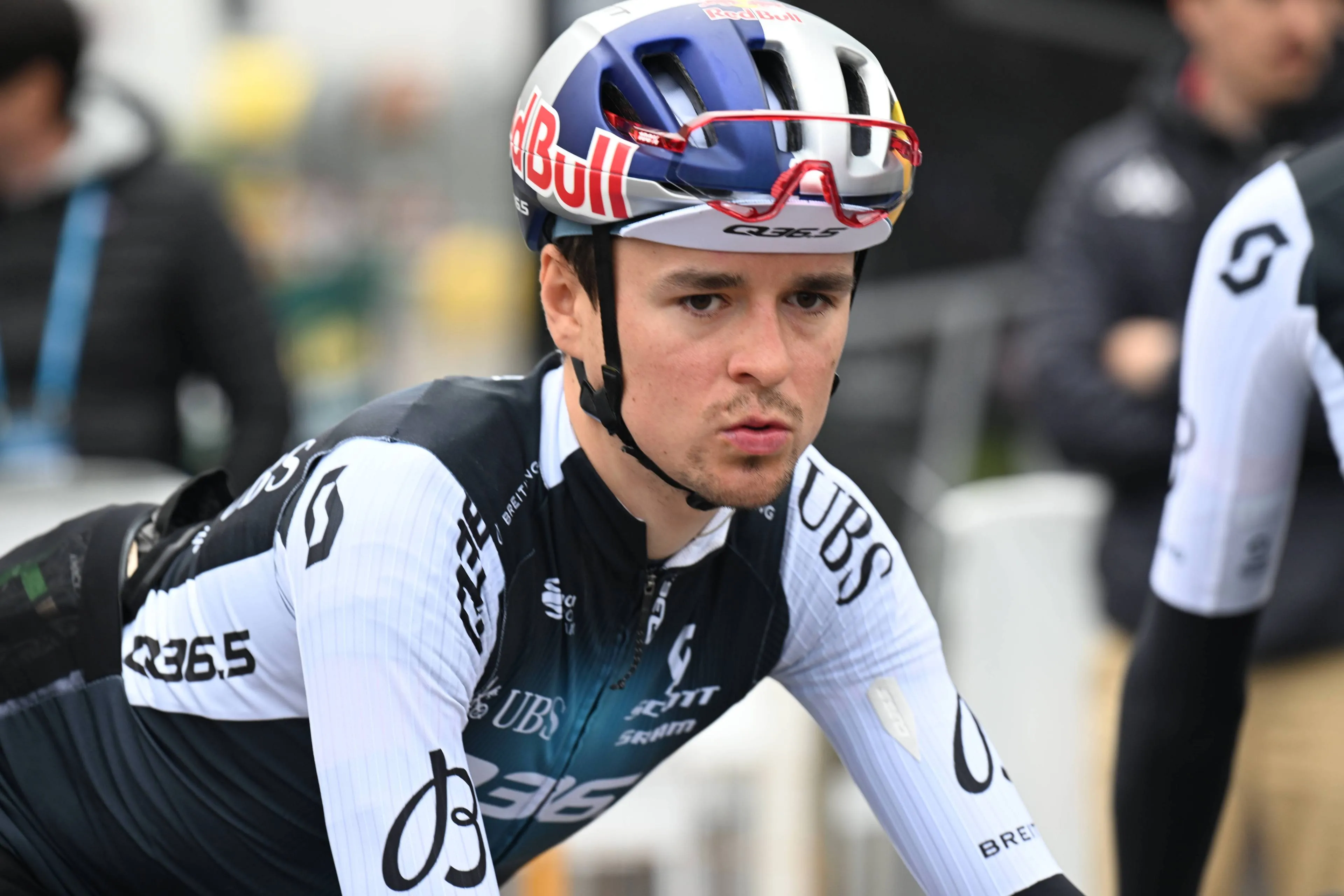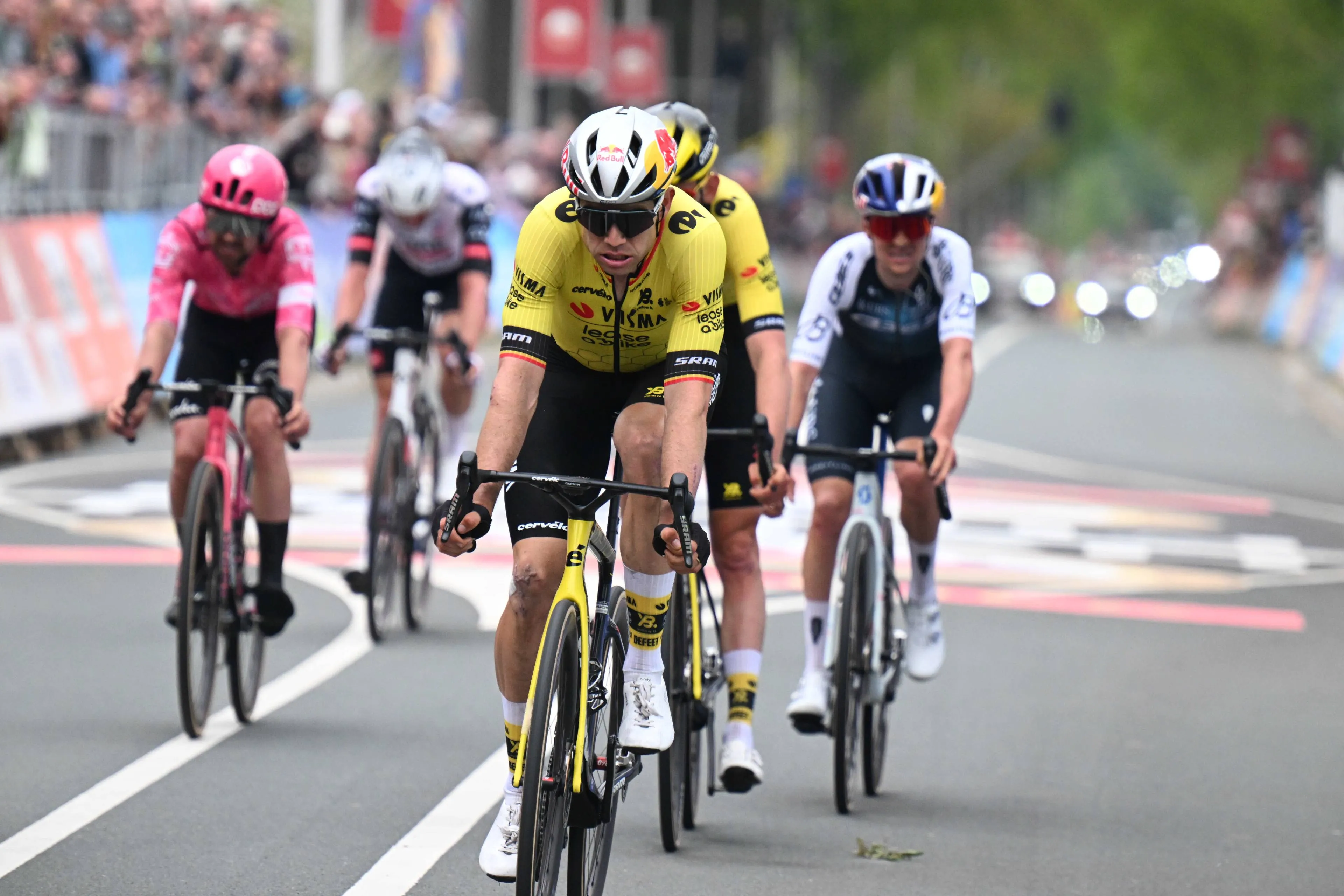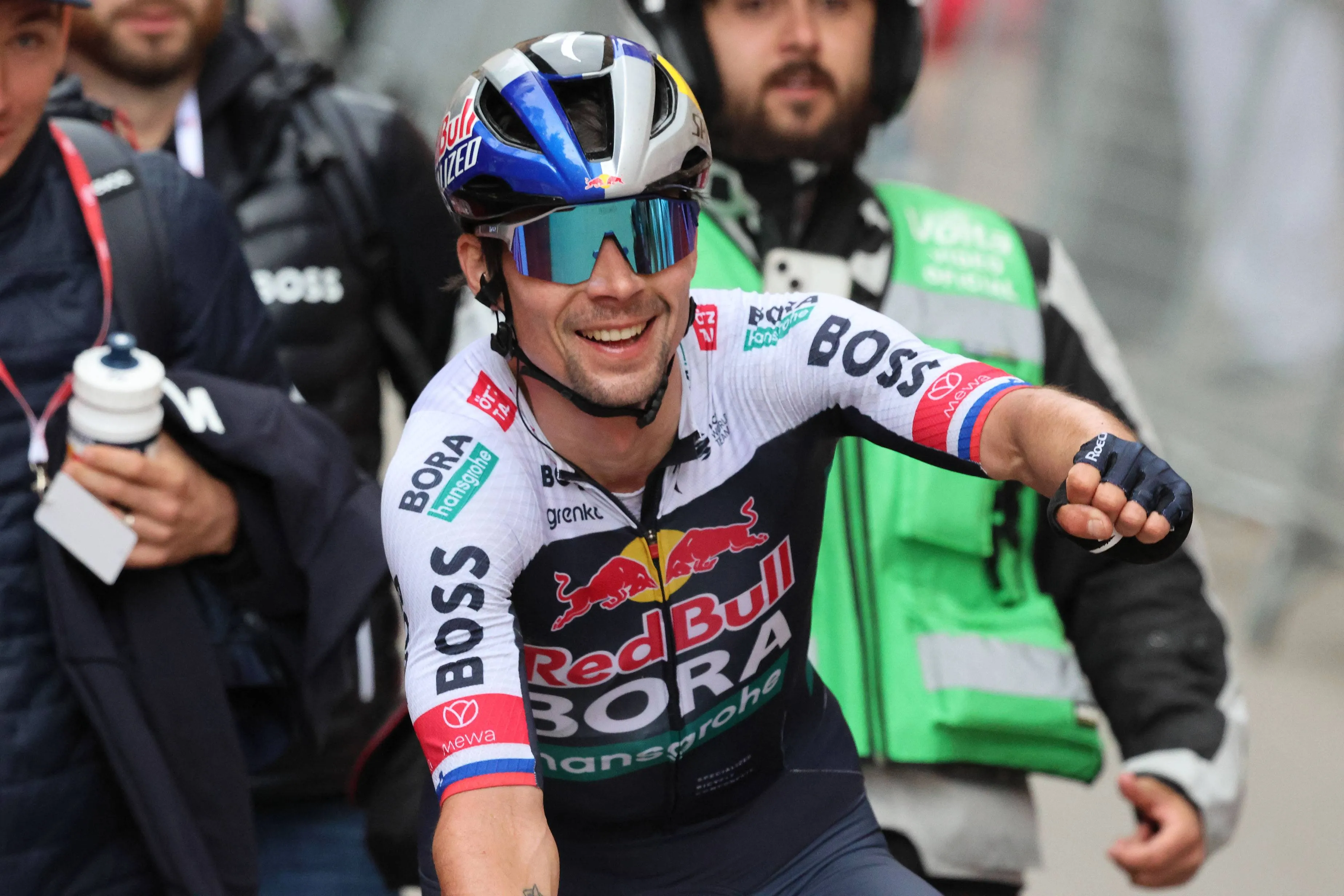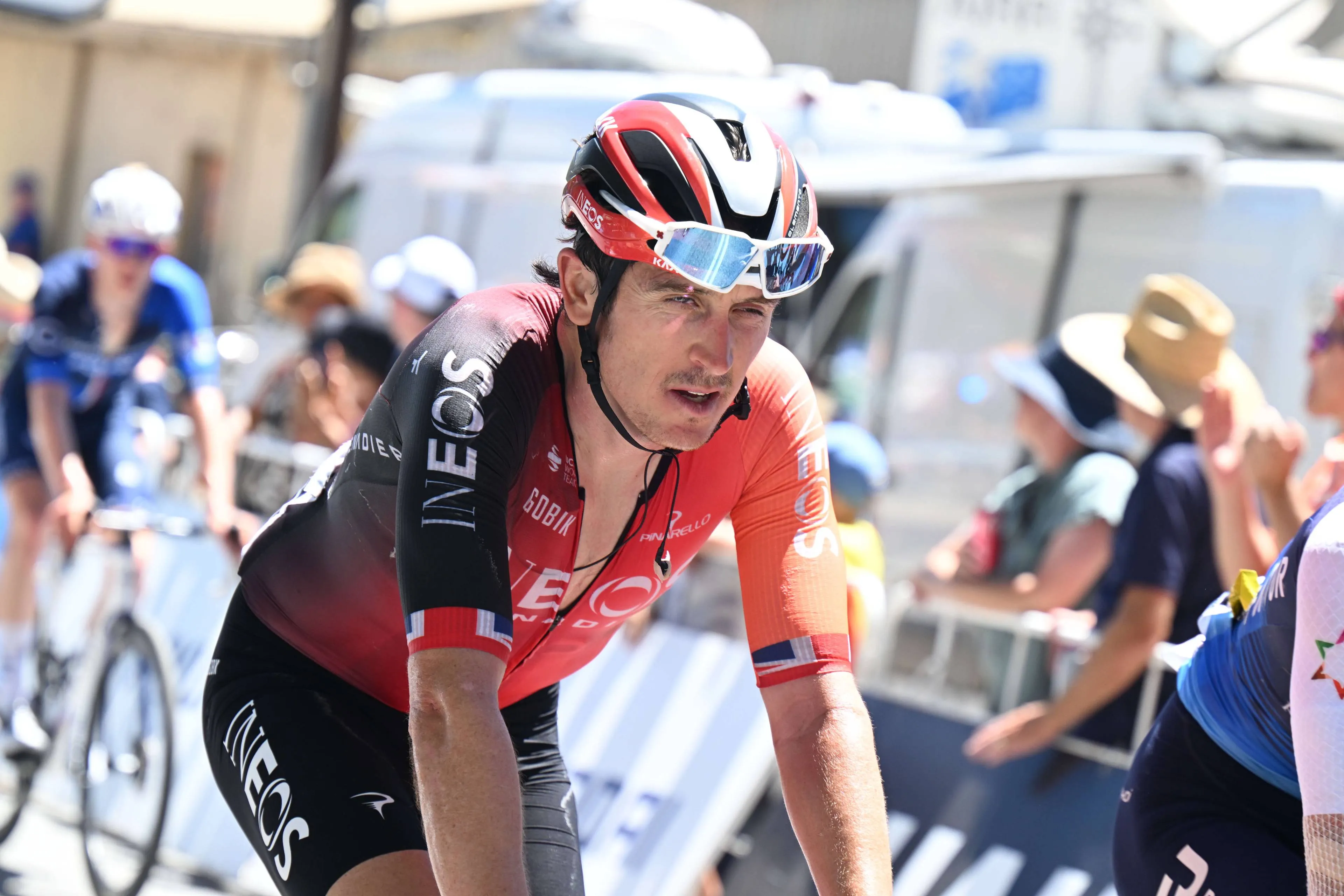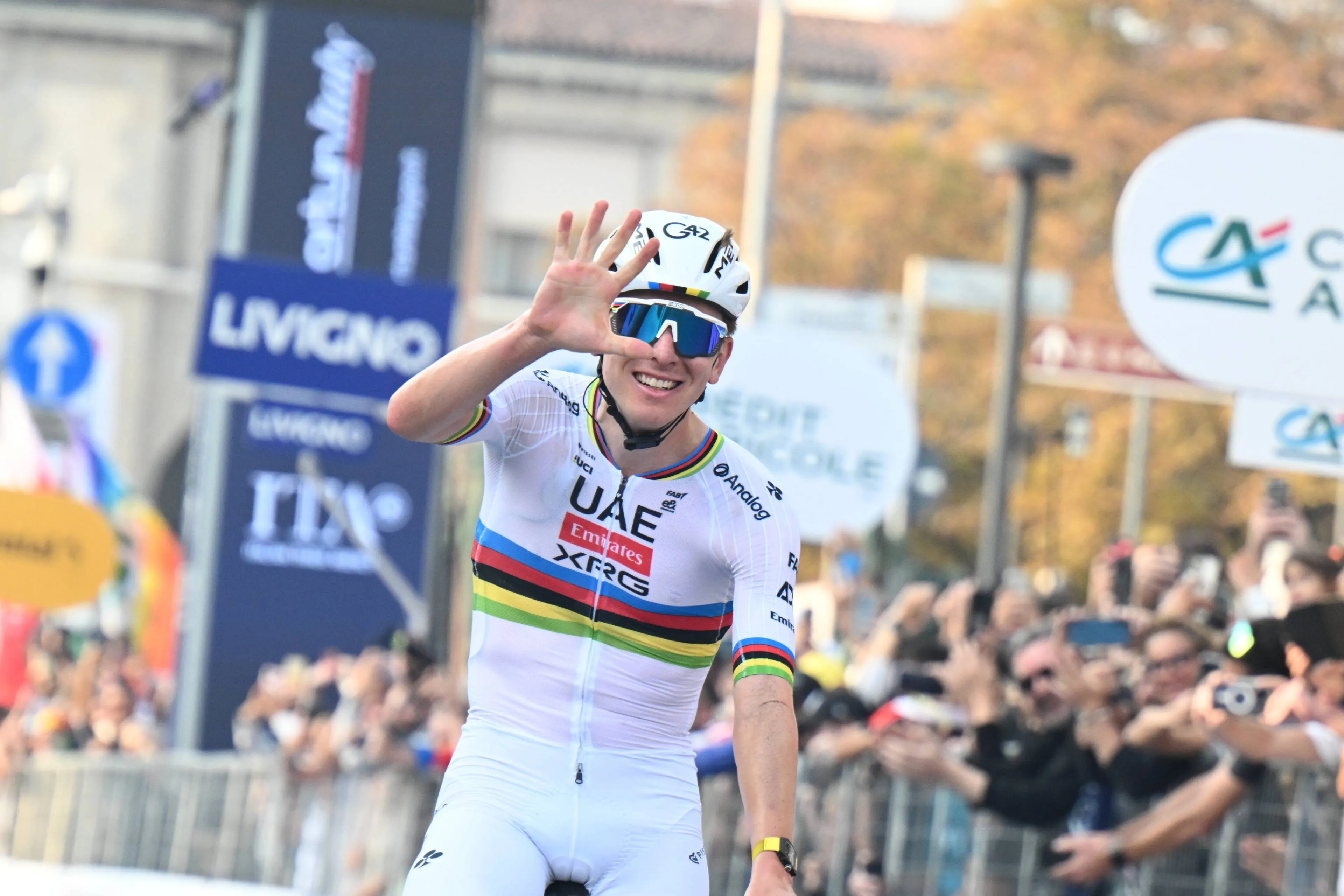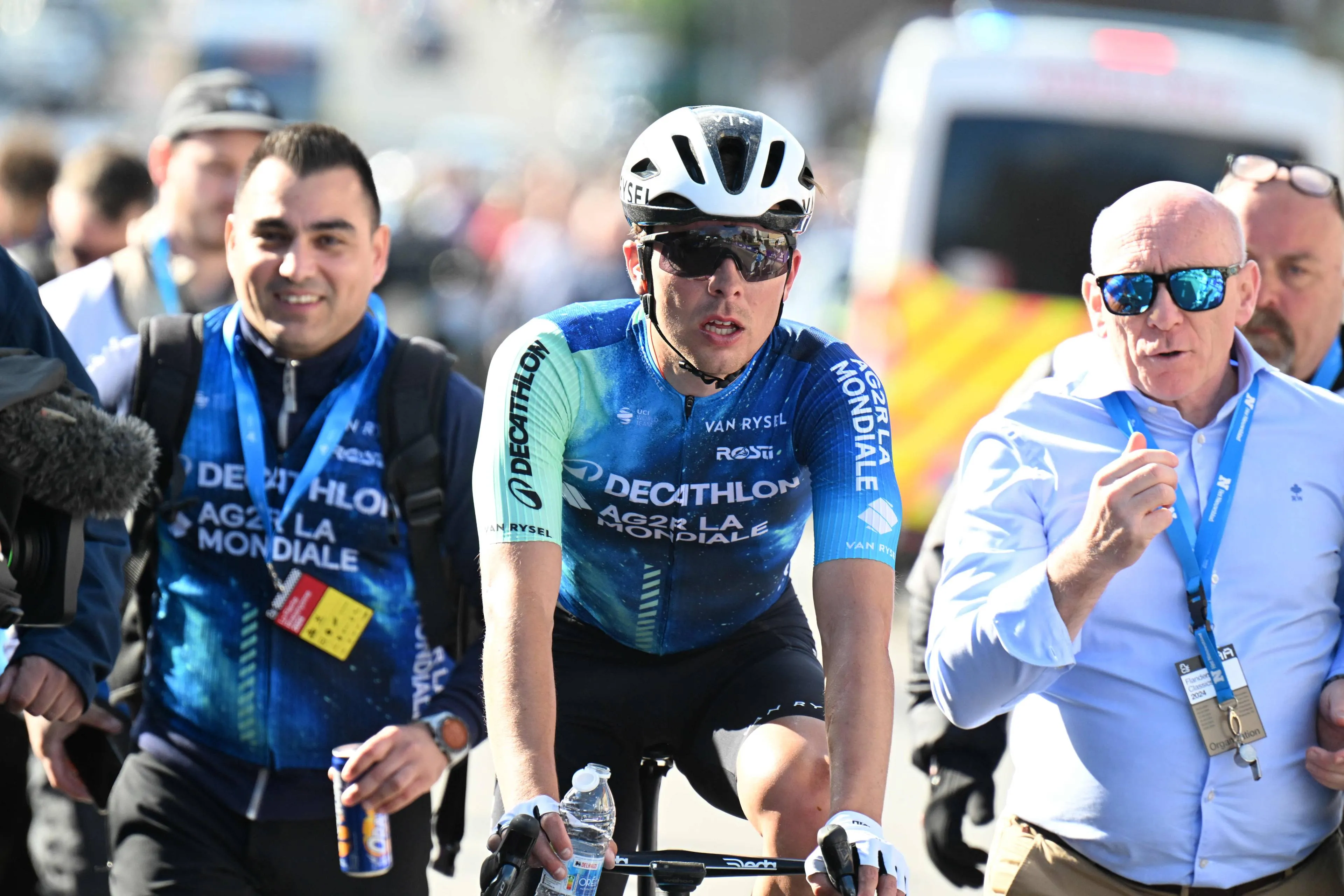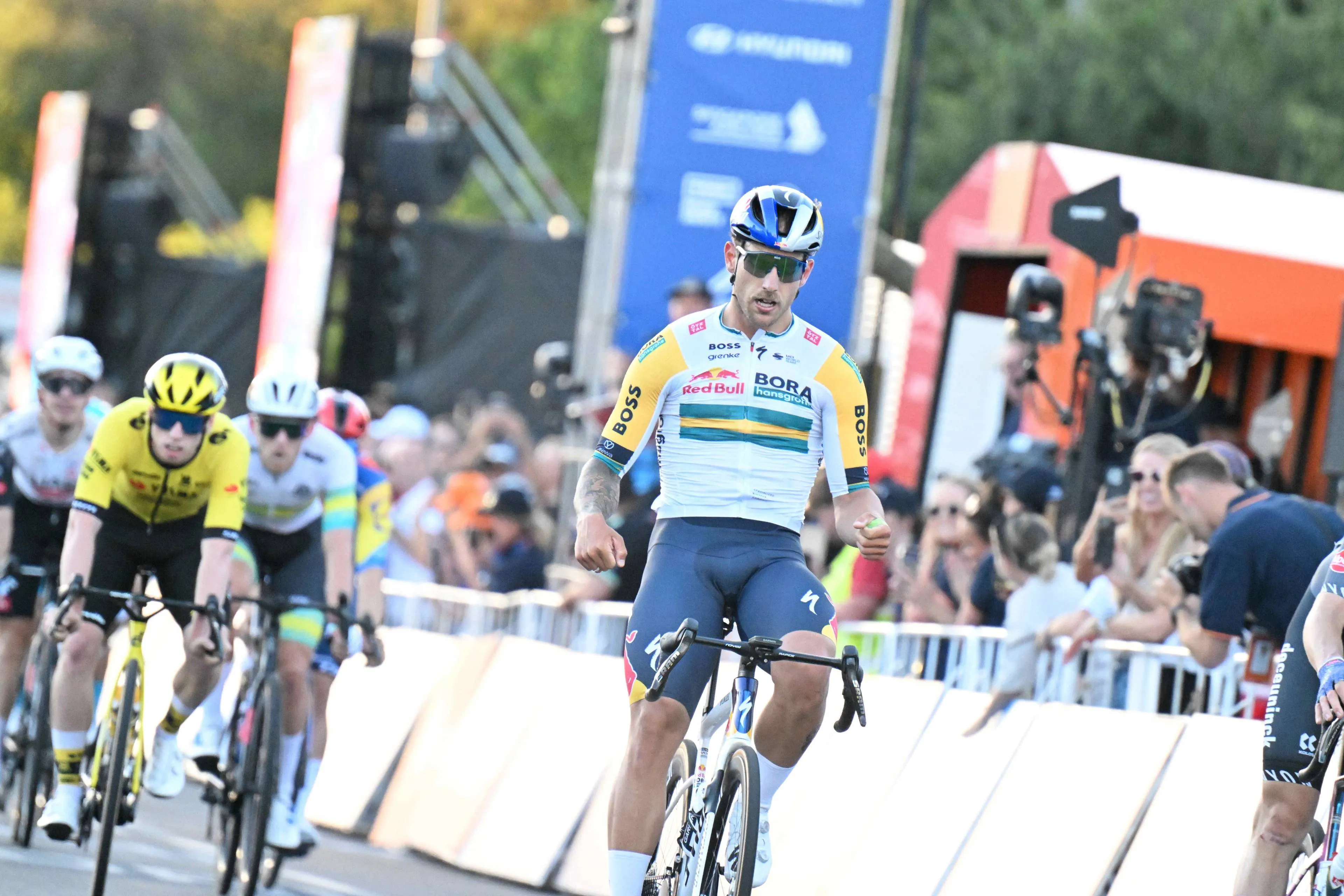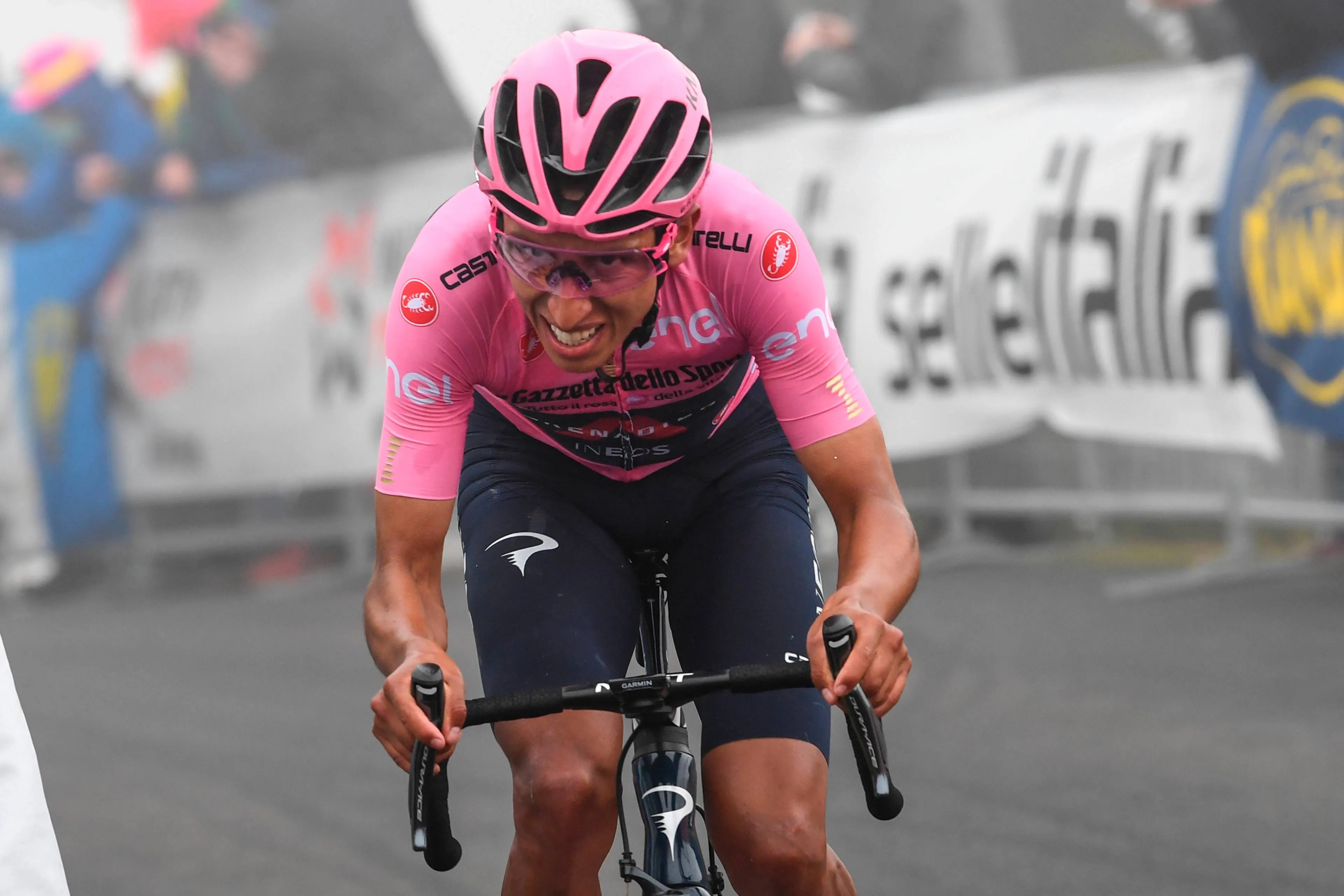ANALYSIS | From Coppi and Bartali, to Pantani and Pogacar: Why the Giro d’Italia is the most beautiful race in the world
CyclingFriday, 09 May 2025 at 10:52

Every May, Italy is painted pink. Streets are draped in rosy
banners, mountain roads fill with eager spectators, and an electric buzz of
anticipation sweeps the country. This Friday, May 9th, the Giro d’Italia, the
grand Tour of Italy, begins once again, and with it returns a national ritual
over a century in the making. But the Giro is far more than a mere sporting
event. It is a cultural phenomenon, a source of Italian pride, and a stage upon
which tales of grit and glory have unfolded to captivate the world.
In a small town along the route, you might find
schoolchildren waving flags and elderly fans reminiscing about past heroes, all
united by the Corsa Rosa. For three weeks, Italy’s tifosi will line cobbled
village lanes and high mountain passes, cheering as if each pedal stroke
carries the nation’s heart with it.
Read also
Origins of the Corsa Rosa
The Giro’s origins trace back to 1909, when a bold idea was
born in the pages of Italy’s sports daily La Gazzetta dello Sport.
Inspired by the early success of the Tour de France, the newspaper’s editors
sought to boost circulation by hosting a grand cycling race around Italy.
From the beginning, the Giro was entwined with the identity
of La Gazzetta, famously printed on pink newsprint. In 1931 organizers
introduced a novel idea to make the race leader stand out: the maglia rosa, or
pink jersey. The colour paid homage to the Gazzetta’s pages, and the jersey
quickly became a symbol of excellence and aspiration. Ever since, every cyclist
dreams of wearing that iconic pink jersey, if only for a day.
Read also
The race itself grew in stature and scale over the decades.
Except for interruptions during World War I and II, the Giro has run annually
since 1909. By mid-century, the peloton had transformed from mostly local
riders to an international cast, and the route expanded in ambition. Longer
distances, more stages, and higher mountains all became part of the Giro’s
evolution as the organizers sought to test the limits of human endurance. From
its humble newspaper-promotional beginnings, the Giro d’Italia has grown into
one of cycling’s three Grand Tours, and for many die hard fans it is seen as
the best.
Italy’s Pride
In Italy, the Giro d’Italia is nothing less than a national
institution, and every spring it unites Italians from all walks of life in a
shared passion. In mountain villages, families pack picnics and trek to
roadside perches at dawn to claim a spot, turning the stage into a day-long festa.
Indeed, from the Alps to Sicily, the Giro brings a carnival atmosphere that no
television coverage can fully capture, you have to be there amid the sea of
flags and roaring voices to feel its true electricity.
Read also
Crucially, the Giro has long been a source of national pride
and collective identity. Much like when Italy’s beloved national soccer team
plays, the Giro commands attention in every town and household, even among
those who aren’t avid cycling fans.
The cultural resonance of the Giro is deeply rooted in
history. In the post-war years, for example, the race provided a sense of hope
and unity for a nation rebuilding from rubble. The 1946 edition was the first
held after World War II and had to navigate a country still physically and
emotionally shattered, yet Italians still rallied around the event as a sign of
normalcy and revival.
Mountains, pain and glory
If Italy’s passion gives the Giro its heart, the mountains
give it its soul. The Giro d’Italia is famed (and sometimes feared) for its legendary
climbs, those punishing ascents that have produced some of the most dramatic
moments in cycling history. The race’s mythology is written in sweat and tears
on roads like the Stelvio Pass, the Gavia, the Mortirolo, and more recently the
brutally steep Monte Zoncolan.
Read also
To conquer the Giro, a rider must endure the full wrath of
these mountains and the fickle May weather that often comes with them. One of
the race’s most fabled episodes occurred in 1956 on Monte Bondone in the
Dolomites. That year a blizzard engulfed the mountain, transforming the stage
into a scene of epic suffering. Luxembourg’s Charly Gaul, a diminutive climber started
that stage far down the standings, over 16 minutes behind the leader.
But in horrendous conditions, Gaul thrived where others collapsed.
As snow piled up and riders dropped out with hypothermia, Gaul pressed on
through the whiteout. He rode alone in the frozen darkness up Bondone, famously
warming his hands with brandy given by spectators, and won the stage by nearly
eight minutes. In one day, he erased his huge deficit and seized the maglia
rosa.
Fast forward to 1988, and another blizzard would cement a
legend. Stage 14 of that year’s Giro featured the Passo di Gavia, a 20km climb
that became the stage for what’s often called The Day the Hardmen Cried.
On that frigid day, American rider Andy Hampsten attacked up the Gavia’s slopes
amid a brutal snowstorm. Temperatures plummeted below freezing as the road
vanished under snow. Amid the chaos, riders were found trembling or weeping at
the roadside, some climbing into team cars to seek refuge.
Read also
But Hampsten, eyes set on the pink jersey, kept grinding
upward, ice coating his goggles and limbs. He reached the summit virtually
alone, having ridden into a blizzard with fearless determination. Though
another rider, Erik Breukink, caught him on the descent to win the stage,
Hampsten’s bravery earned him the overall race lead, becoming the first
American to win the Giro.
For every triumphant ascent, the Giro has also seen heartbreaking
collapses that only add to its drama. Who can forget 2018’s astounding Stage
19? On what was described as “one of the most extraordinary days in Giro
d’Italia history,” Britain’s Chris Froome unleashed an 80-kilometer solo attack
across the Alpine gravel of the Colle delle Finestre, a move even Tadej Pogacar
would have been proud of!
In a move few thought possible, he erased a three-minute
deficit, obliterating his rivals with a solo escape and riding himself into the
pink jersey. Behind him, the race leader Simon Yates spectacularly cracked,
losing over half an hour and any hope of victory in a matter of kilometers.
Froome’s all-or-nothing gamble paid off in what will be remembered as a stage
for the ages, proving that the Giro’s unpredictability and penchant for late
twists remain alive and well.
Read also
Rivalries and heroes
Beyond individual exploits, the Giro d’Italia has been
defined by towering personalities and rivalries that have become part of
Italian folklore. The race’s golden era, often said to be the 1940s and 1950s,
was dominated by the duels of two men whose names still evoke reverence: Fausto
Coppi and Gino Bartali.
Coppi, elegant and innovative, and Bartali, the rugged man
of faith, could not have been more different – and Italians loved them for it. Their
rivalry spilled beyond sport; it divided households and regions, yet ultimately
united a nation starved for heroes in the difficult post-war years.
One iconic story from their rivalry is the 1949 Giro,
specifically the monumental Cuneo–Pinerolo stage. It was 254 km long over five
mountain climbs, a true marathon. Coppi attacked early and embarked on a solo
breakaway of 190 km, an almost unimaginable feat.
Read also
As he scaled peak after peak
alone, radio commentator Mario Ferretti delivered a line that has since become
immortal in Italy: “Un uomo solo è al comando, la sua maglia è
biancoceleste, il suo nome è Fausto Coppi!” – “A lone man is in the lead,
his jersey is sky-blue, his name is Fausto Coppi!”
Those words crackling over the radio sent Italians into
rapture. Coppi won that stage by 11+ minutes; Bartali, chasing valiantly
behind, was second on the day. Coppi went on to take the 1949 Giro, and older
Italians can recite those words from memory, a testament to how the Giro’s
legends imprint on the national consciousness.
Then came the era of Marco Pantani in the 1990s, which
reawakened Italy’s infatuation with a true cycling idol. Pantani, the
diminutive, bald climber from Romagna nicknamed Il Pirata (The Pirate)
for his bandana and earrings, was nothing short of a rock star in Italy.
Read also
His style of racing, all guts and attack on the steepest
slopes, was a throwback to the days of Coppi. When Pantani danced on the pedals
in the high mountains, crowds would swarm the road in a pink frenzy, running
alongside him for a chance to push their hometown hero onward. In 1998, Pantani
achieved a feat Italians had waited decades for: he won the Giro d’Italia and
then the Tour de France in the same year. It took another 26 years for a rider
to replicate this feat, as Tadej Pogacar did in 2024.
Pantani’s Giro win that year, taken with daring attacks in
the Dolomites, made him a national hero, tens of thousands greeted him in
triumph in Milan. But Pantani’s tale would turn tragic. In the 1999 Giro, while
leading comfortably, he was dramatically expelled from the race after a blood
test suggested doping.
He was not officially caught using EPO at that moment, but
the cloud of suspicion and ensuing ban crushed him. Pantani fell into
depression and died in 2004, an end that broke the collective heart of Italy.
To this day, shrines and graffiti honoring Pantani dot many Giro climbs, and
fans still speak of him in reverent, mournful tones. His rise and fall
encapsulate the Giro’s emotional spectrum, from the highest highs of euphoria
to the most devastating lows.
Read also
Legacy
As the 108th edition of the Giro d’Italia departs on its
journey across Italy, it carries with it all the weight of history and the
exuberance of a fresh start. Every generation adds new chapters to the saga. In
recent years, the race has continued to surprise and inspire: from the
unheralded 2016 victory of Vincenzo Nibali, who clawed back a seemingly lost
cause in the final mountains, to the fairy-tale win of Tao Geoghegan Hart in
2020, when the young Brit seized his chance in the final stage against all odds.
But who will write their name in pink this year?
Globally, the Giro d’Italia has secured its place as one of
the premier events in sport, with viewers from every continent tuning in to see
the drama unfold amid stunning Italian scenery. It may be the second-oldest
Grand Tour (a few years younger than the Tour de France), but many aficionados
will argue it is the most beautiful and unpredictable of them all. The Giro
doesn’t boast the same commercial might or worldwide fanfare as the Tour, but
perhaps that is part of its charm.
Read also
Riders often speak of the Giro’s unique atmosphere: the
warmth of the Italian fans (even as they mob the roads), the slightly looser vibe
compared to the pressure-cooker of the Tour, and the deep respect for the
race’s traditions. The maglia rosa, in its own way, is as coveted as the Tour’s
yellow jersey, not because it’s worth more money or fame, but because of the
legacy it represents. Wearing pink links a rider to the likes of Coppi, Merckx,
Hinault, Indurain, and now Pogacar, and all the giants who have worn it before.
Ask any Italian, and they’ll tell you the true essence of
the Giro is the passion it ignites. It’s in the voice of the roadside spectator
yelling “Vai! Vai!” (Go! Go!) at a labouring rider, running just to keep up for
a few frantic seconds. It’s in the tears of a winner on the podium, wrapped in
the flag as the national anthem plays. It’s in the quiet pride of a small-town
bar owner who keeps a photo on the wall of the day the Giro passed through his
village, bringing everyone together in celebration.
The Giro d’Italia is special because it moves people,
emotionally as much as physically. It celebrates the harsh beauty of both
Italy’s terrain and the human endeavour, reminding us that suffering can be
sublime and that victory can be deeply poignant.
claps 13visitors 5
Just in
Popular news
Latest comments
- It's boring. Happy to acknowledge him as the GOAT, but it's boring.MidnightRider17-12-2025
- They are spending money like water for the wrong riders. No Ayuso or Remco but Haig, Kevin and Onley.abstractengineer17-12-2025
- Oh dear.leodis17-12-2025
- Ah pundits….those who cannot do, fill air time and column inches criticizing those who can… Eddy Merckx wins all the races…cycling is boring and sucks nowCrashjames17-12-2025
- Boring to see a generational talent in your own life time? We should all feel privileged to see it. I certainly do. I feel the same when I see other once in a life time amazing guys in other fields rewriting the record books: Magnus Carlsen in chess and Shoei Ohtani in baseball. And the way they carry themselves.. humble and respected by their peers adds to their appeal.Santiago17-12-2025
- As a current or ex crosser, you should be asking yourself 'what is VDP doing that I'm not', instead of bellyaching that he's winning everything. It's not boring for me to watch an athlete, at the pinnacle of their career, absolutely pulverised the opposition. Whether it be Tiger Woods, Usain Bolt, Roger Federer or indeed our own Tadej Pogacar. Are cyclists really such a bitter breed that we see excellence as boring? Personally, I'm in absolute awe. Here's a question for Mr Wellens, how long will it take before Thibaut Nys becomes boring, after VDP has hung up his wheels?Pogthegoat17-12-2025
- Monotonous? Boring? Pundit? WTF?MajorPayne17-12-2025
- What a backwards step for this team. First the signing of Ayuso and now every chance of Derek Gee.whit2pet17-12-2025
- and also let’s hope he doesn’t have a wife that goes off on the team and riders.mij17-12-2025
- with all due respect to Welsford, what has he won to deserve the title “ace”. he is there in many sprints, but other than some nationals and maybe a 3rd tier race, he isn’t exactly a feared sprinter in the peloton. of course with the right team he could become a winner, but is Ineos the right team? Unlike a Quick-Step, Ineos is not exactly sprinter friendly. they don’t have a track record of developing winners at sprinting.mij17-12-2025
Loading
Write a comment

